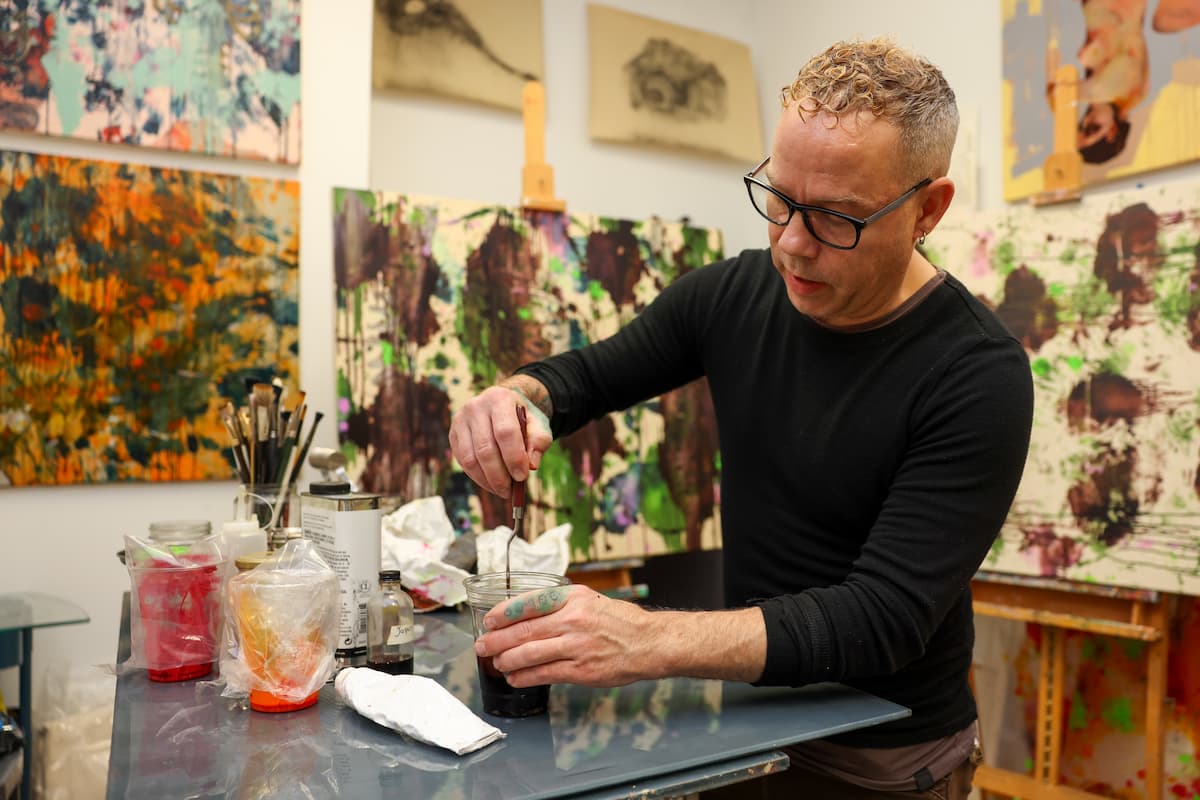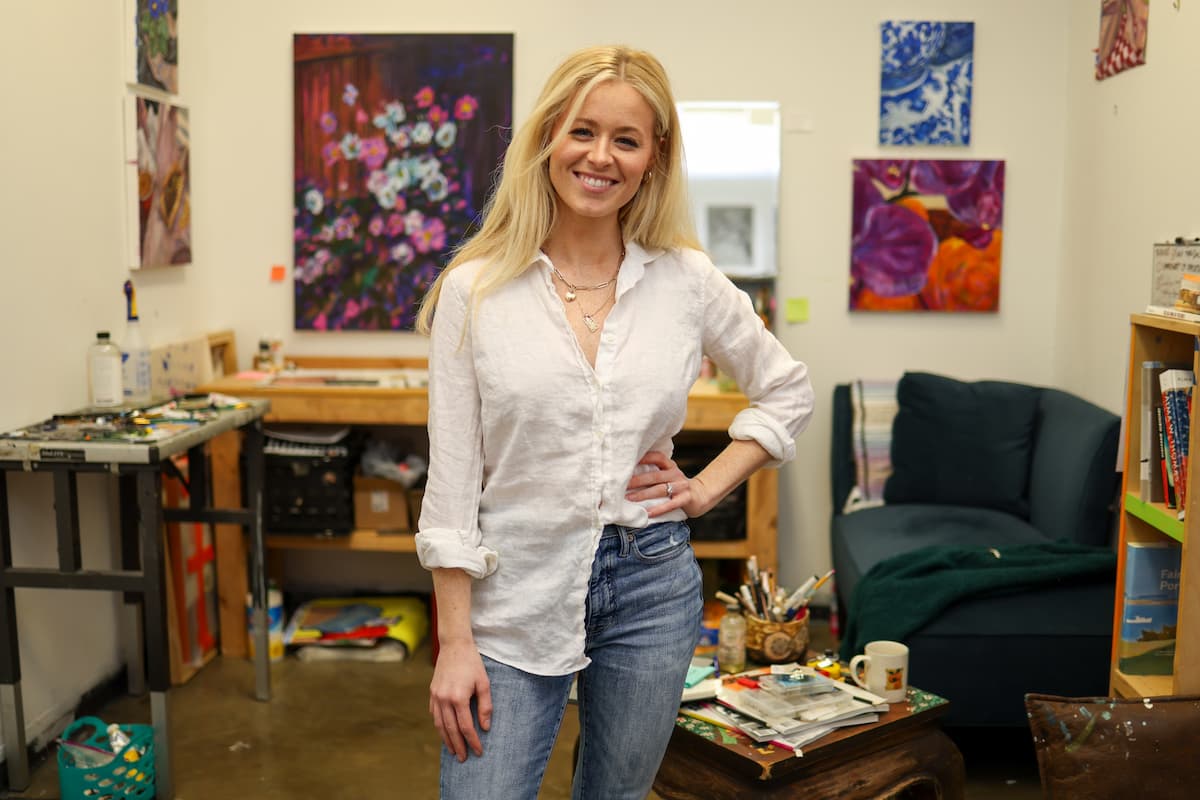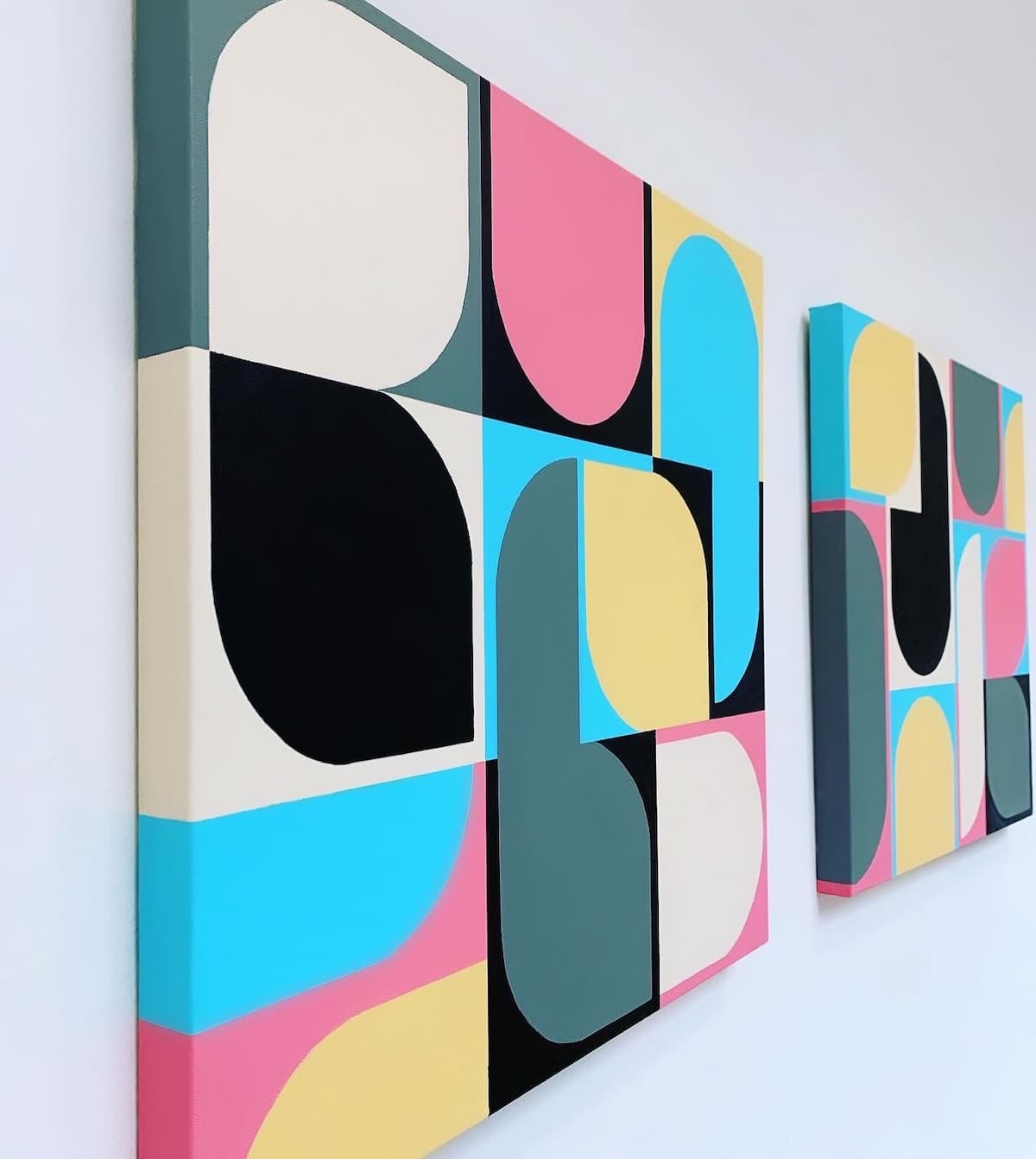Studio Art MFAs Present Thesis Exhibition “SURFACE TENSION”
Graduating artists from the American University Studio Art MFA Program will open their thesis exhibition SURFACE TENSION | The Visible and The Hidden at the AU Museum on April 6. The artists vary in their use of media and style but are connected by their shared experiences in the program. The artworks in the exhibition bring forth rich autobiographical information that informs each of the artist’s practices and journeys.
The exhibition will be on view through May 19, and an opening reception will be held on Saturday, April 6, from 5:30 to 8 p.m. Learn more and plan your visit.
Marie B Gauthiez
Instagram: @mariebgauthiez
 Photo by Elena Zimmerman
Photo by Elena Zimmerman
I use walls as palimpsests to embody allegories of the self. I grew up in the north of France, surrounded by my family’s century-old businesses of construction, carpentry, and historical renovation. In this environment, I came to learn that walls are non-sentient architectural elements, and yet, they are containers of our lives. Attached together, they form our intimate, social, and emotional environments, and they impact us as people.
In my mixed media works and installations, I think of walls as versatile constructions that mimic our human contradictions. They are barriers or protections, mirrors or veils, passive witnesses or loud declarations. I am also interested in how they connect to a larger cultural and historical perspective, thinking about how civilizations used walls to narrate and remember, or erase. Walls to me express place, struggle, culture, beliefs, socio-economic background, taste, and aspiration. I construct, excavate, and revise to bring forth an altered reality of the memories of spaces and objects. How do time, weather, and trends impact the aesthetics of those walls?
Neal Gwaltney
Instagram: @nealgwaltney
 Photo by Ethan Kauffman
Photo by Ethan Kauffman
Recently I have been obscuring and excavating images in my paintings. And these questions keep coming to mind: How much representation must be present for a painting to contain a narrative? Can a painting function as a map for a memory? And, like memories, can imagery be made that appears to change over time?
Starting with drawn imagery based on childhood memories, my paintings then develop their own trajectory as the drawings are covered by multiple layers of printed oil paint. The evidence of the drawing varies. In some, there are only traces, and in other paintings, clearly visible charcoal can be seen. Then, more paint is applied, moved around, or washed off, providing only segments of representational information.
I’m creating an arena for the viewer to encounter their own visualizations intertwined with hints of representation. Ultimately, I’m interested in the ability of ambiguity to simultaneously enhance and diffuse meaning.
Charles Jean-Pierre
Instagram: @cjpgallery
 Photo by Ethan Kauffman
Photo by Ethan Kauffman
This body of work is a self-referential, multidisciplinary meditation on the expansive definition of Blackness through the convention of the entendre. Artifacts from my local and global explorations have been collected, shifted, and transformed to create the visual language of the metaphorical Black (w)Hole. The works represent a historical dislocation of people and objects. The recontextualization of found objects through distilling, clarifying, and covering emphasizes the value and form and forces the viewer to confront the symbol. The opaque black and rusted brown works are fragments of my sculptural concepts that have been consciously constructed to express the wholeness of my practice.
The repurposed works from the charred rocking chair to the charcoal market cart are evidence of motion and time passed. They are proof of a slowing down or easing of sorts. The Blackwashed works are intended to reflect an inner animation of psychological connections and disconnections.
Lindsay Mueller
Instagram: @lindsaymuellerart
 Photo by Elena Zimmerman
Photo by Elena Zimmerman
As a landscape painter living in an urban environment, much of the nature I encounter exists as thin slices situated between urban infrastructure, where subtle signs of human life impact my perspective. I am interested in how we intersect with these spaces, and through our interaction, what endears us to them. Using mark making, I accentuate these moments of connection and rupture in the paintings. Color contributes to this exploration as well, as I use fluorescent and metallic paints to create vibrant dissonance, creating a visceral immediacy against deeply chromatic, layered passages.
In many recent works, I have used plaster to create dimensional texture beneath the paint, embedding shadow patterns and other ephemeral information from the landscape. As my brush responds to both the landscape image and the surface topography, the work accumulates a mix of location-based information and personal self-invention. Through this process, my work creates tactile remnants of my experiences with an underlying unsureness of stability despite the weight. How real is this space? Built up over time, these landscape fragments evoke airy connection and clunkiness, resonating metaphorically to a shifting yet weighted presence of being.
Taylor Sizemore
Instagram: @taysize
 Photo by Ethan Kauffman
Photo by Ethan Kauffman
My practice is a contemporary twist on the still life genre. Utilizing my digital archive and foundation in photography, I translate personal experiences and ideas surrounding the body–through oil paint on canvas. In the paintings I combine space and time, pulling objects, patterns, and memories from different years to create imagery and connections that lead to the current moment. Areas of passivity, diluted or deeply ingrained memories, strong, visceral thoughts, and slippery sensuality are described through paint and surface to inform objects and context, connecting to the thoughts of audience and performer–success and uncomfortability. I’m interested in the oddity and charge of combining moments in the same composition.
I like working with multiple layers of thin washes of oil paint competing against highly realized areas, utilizing different painting applications in rhythm and opacity to describe sections of the canvas with peculiarity. I employ a call and response with the material, conflicting attention. All of the objects, patterns, and spaces described have deep personal meaning for me, and are specific to my experience.
Genie Ghim
Instagram: @genieghim
 Genie Ghim, Shapes of Passage I & II, 2023. Acrylic on canvas, 24 x 24 x 1.5 in. Courtesy of the artist.
Genie Ghim, Shapes of Passage I & II, 2023. Acrylic on canvas, 24 x 24 x 1.5 in. Courtesy of the artist.
At the heart of my work lies a fascination with the concept of synthesis. With an eclectic background, I work to illuminate the intersections of cross-cultural interactions, social dynamics, and the complexities of the human condition.
My recent studio practice involves explorations of various mediums, including contemporary screen prints, paintings, sculptures and laser-cut acrylic. These works narrate surreal themes, notions of co-existence, elements of pop culture and witty text with contextual play in my Phraseology series.
As an expatriate from Washington, DC (b. Seoul) having lived in Asia, Europe, and the Middle East, transnational experiences inform and enrich my artistic practice. My work is deeply influenced by the impressions gained from my immersive research in regional art histories. These insights are represented in hard-edged abstraction and bold colors that challenge the viewer to question subconscious preconceptions and perceptions. Clear lines and distinct forms define the ambiguity of cultural synthesis, and the coexistence of tradition and innovation.
